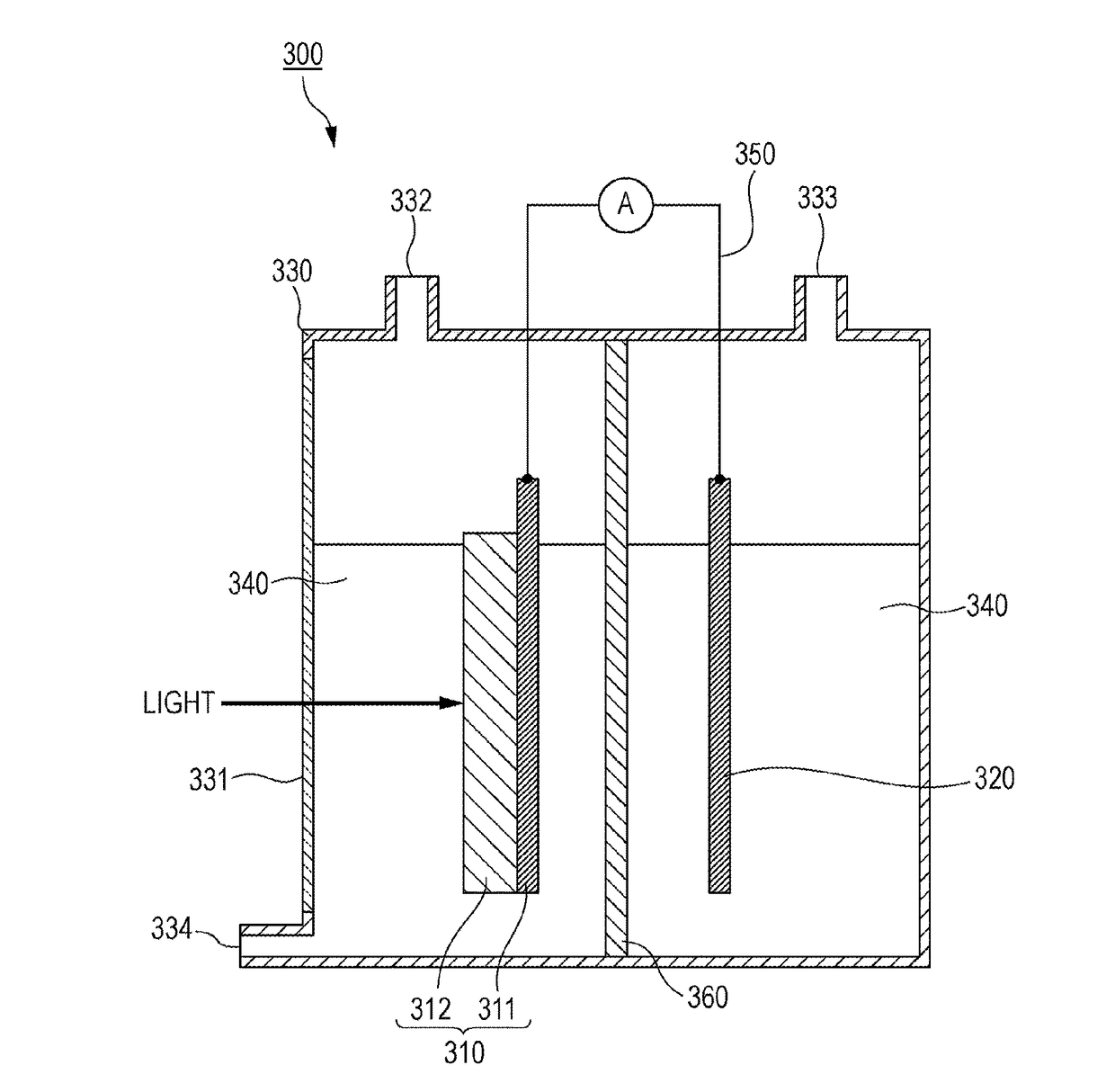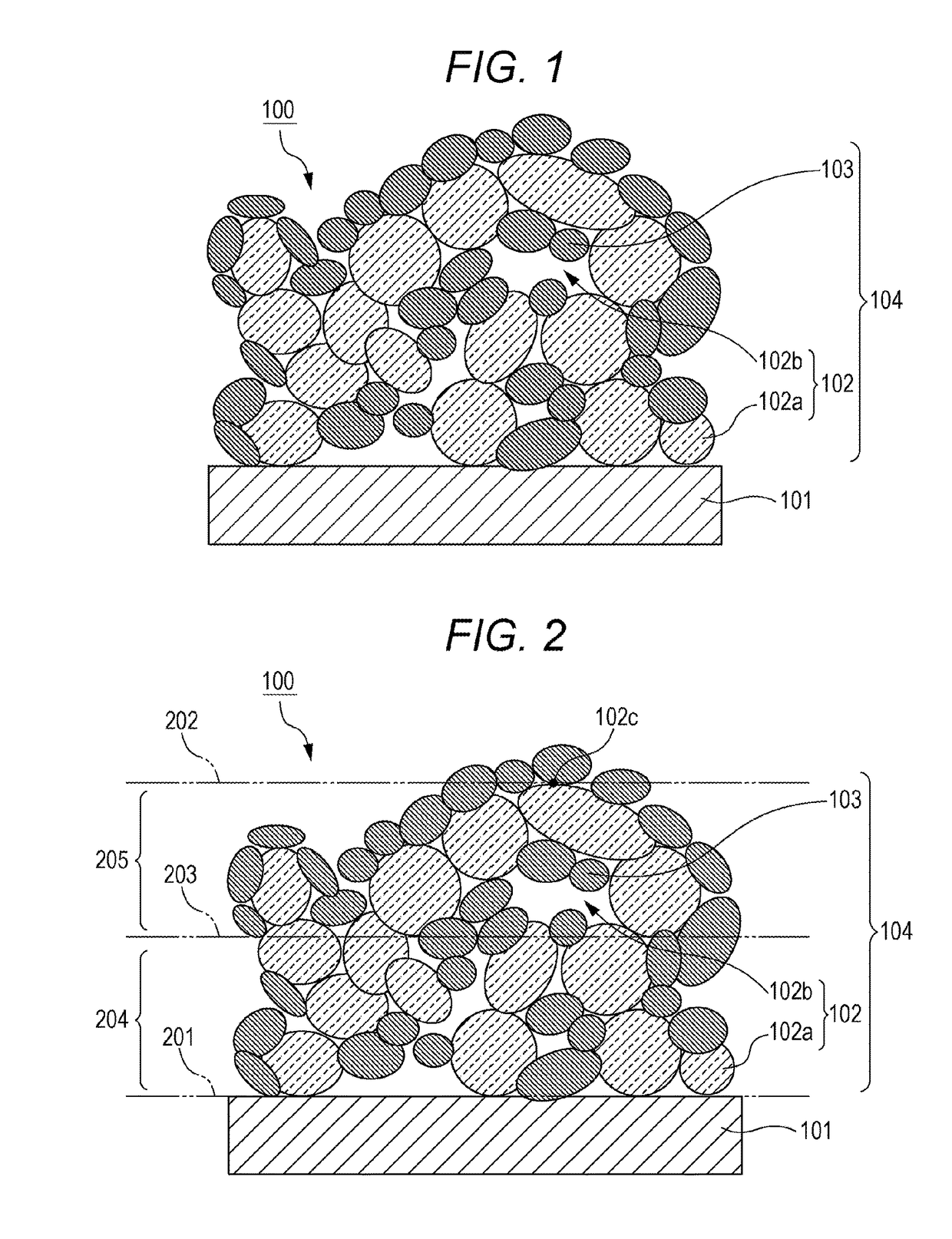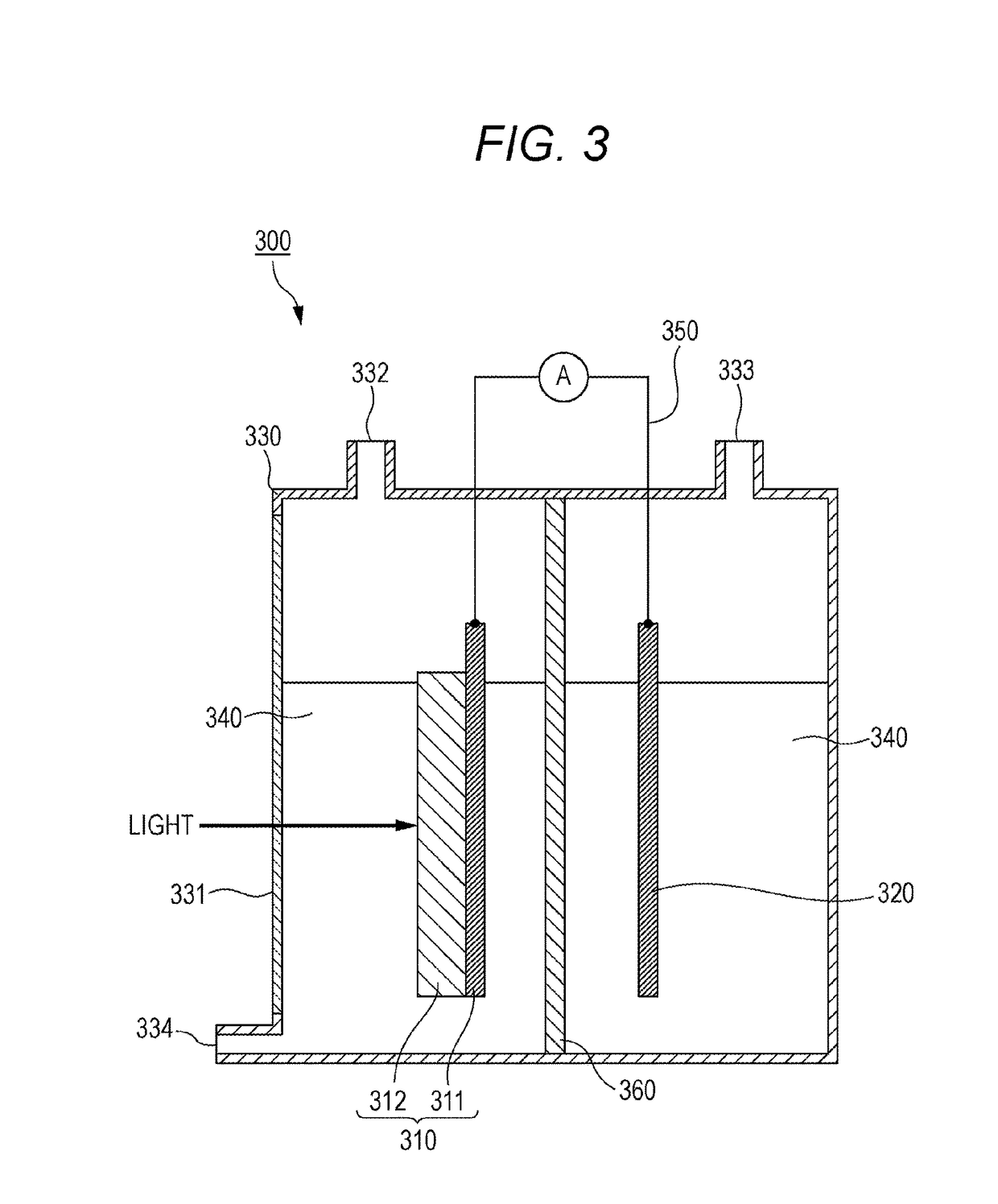Photoelectrode, method for manufacturing same, and photoelectrochemical cell
- Summary
- Abstract
- Description
- Claims
- Application Information
AI Technical Summary
Benefits of technology
Problems solved by technology
Method used
Image
Examples
first exemplary embodiment
[0055]A photoelectrode of a first exemplary embodiment includes a first conductor as a substrate, and a second conductor disposed on the first conductor. The second conductor has a porous structure including a three-dimensionally continuous skeleton and pores formed by the skeleton, and is transparent. The photoelectrode of this exemplary embodiment further includes a visible-light photocatalyst disposed in the pores of the second conductor. The visible-light photocatalyst should be disposed at least in the pores of the second conductor, and may be disposed further on a surface of the second conductor. The visible-light photocatalyst may be in the form of particles, or in the form of a film. It can be considered that a photocatalyst layer including a visible-light photocatalyst is disposed in the pores of the second conductor in the photoelectrode of this exemplary embodiment.
[0056]The phrase “the skeleton of the second conductor is three-dimensionally continuous” encompasses not on...
second exemplary embodiment
[0080]One exemplary embodiment of a photoelectrochemical cell of the present disclosure will be described.
[0081]FIG. 3 shows one example of the photoelectrochemical cell of this exemplary embodiment. Photoelectrochemical cell 300 shown in FIG. 3 includes photoelectrode 310; counter electrode 320; electrolytic solution 340 containing water; and container 330 that stores photoelectrode 310, counter electrode 320, and electrolytic solution 340.
[0082]As photoelectrode 310, the photoelectrode described in the first exemplary embodiment is used. Photoelectrode 310 includes first conductor 311 as a substrate, and composite 312 disposed on first conductor 311 and composed of a second conductor and a visible-light photocatalyst. The second conductor has a porous structure including a three-dimensionally continuous skeleton and pores formed by the skeleton, and is transparent as described in the first exemplary embodiment. The visible-light photocatalyst is disposed in the pores of the second...
example 1
[0096](1) Step of Forming Second Conductor (Antimony-Doped Tin Oxide: ATO)
[0097]An ATO substrate was provided as a first conductor. An ATO powder having a primary particle size of 120 nm to 250 nm was used as a transparent conductive oxide for producing a second conductor. An ink with the ATO powder dispersed in an organic solvent was prepared, deposited on the ATO substrate by spin coating, and dried for about 5 minutes on a hot plate set at 120° C. Conditions for spin coating included rotation at a rotation number of 400 rpm for 20 seconds, followed by rotation at a rotation number of 1500 rpm for 10 seconds. After the drying, the film on the ATO substrate was fired in a mixed gas stream of oxygen and nitrogen. In the firing, a temperature in a furnace was elevated from room temperature to 500° C. at a temperature elevation rate of 100° C. / h, held at 500° C. for 1 hour, and then lowered at a temperature falling rate of 100° C. / h, and the film was taken out from the furnace at the ...
PUM
 Login to View More
Login to View More Abstract
Description
Claims
Application Information
 Login to View More
Login to View More - R&D Engineer
- R&D Manager
- IP Professional
- Industry Leading Data Capabilities
- Powerful AI technology
- Patent DNA Extraction
Browse by: Latest US Patents, China's latest patents, Technical Efficacy Thesaurus, Application Domain, Technology Topic, Popular Technical Reports.
© 2024 PatSnap. All rights reserved.Legal|Privacy policy|Modern Slavery Act Transparency Statement|Sitemap|About US| Contact US: help@patsnap.com










